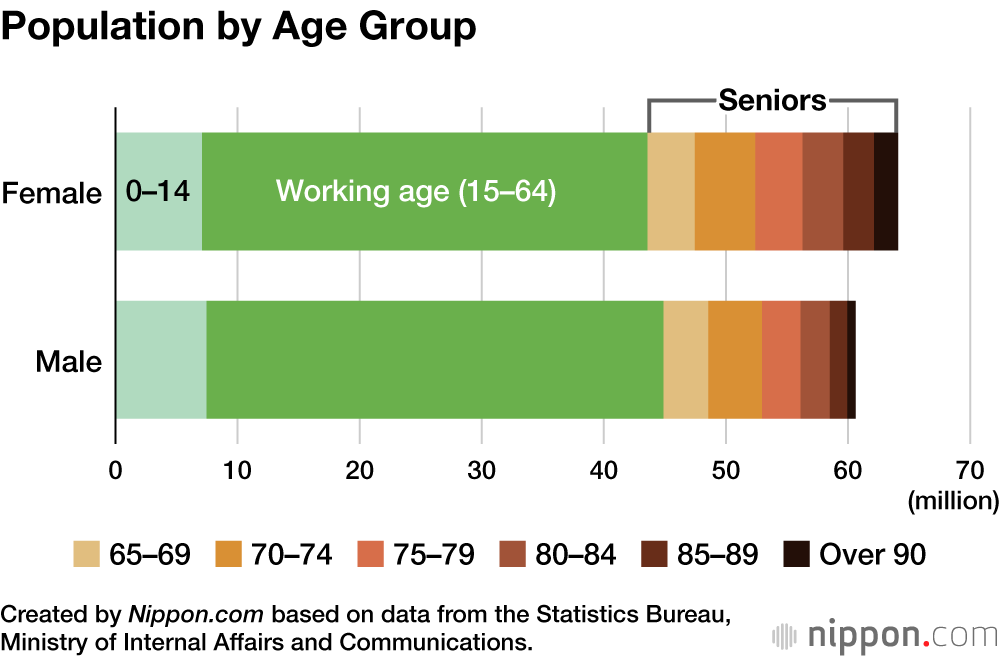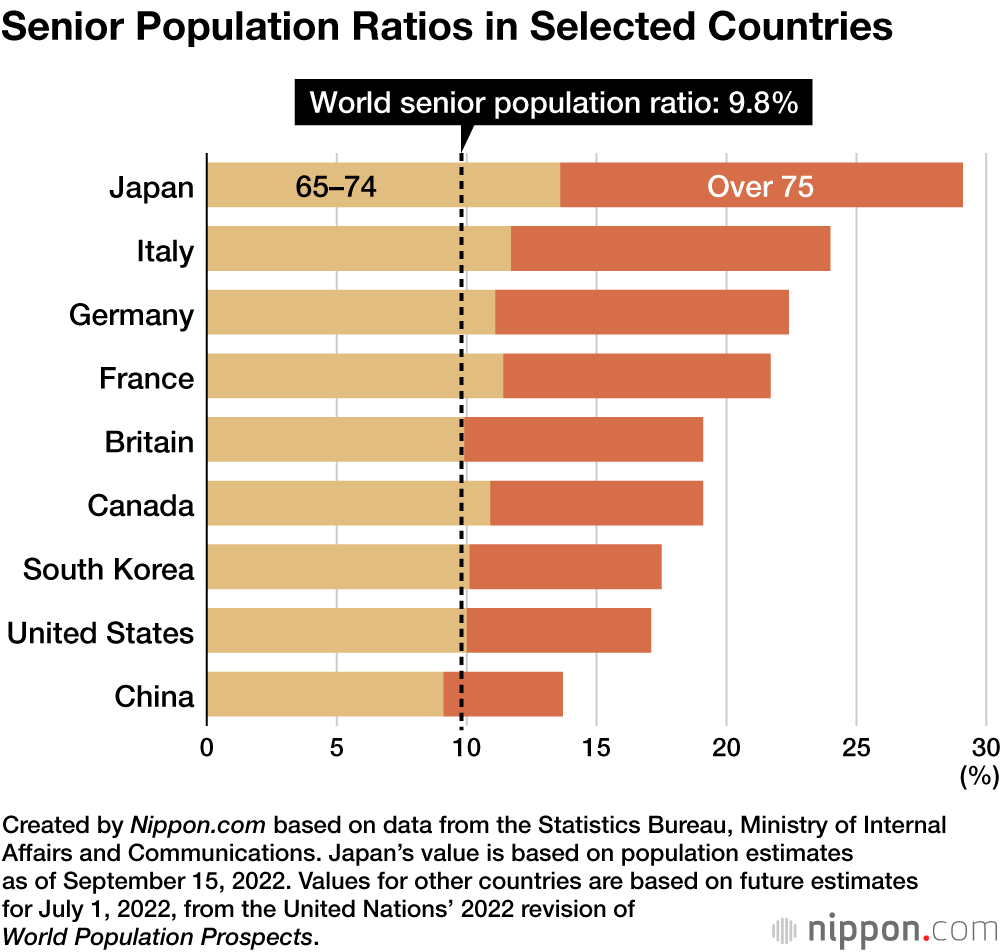
Japan Continues to Gray: Baby Boomers Reach 75
Society Health- English
- 日本語
- 简体字
- 繁體字
- Français
- Español
- العربية
- Русский
Population estimates compiled by the Ministry of Internal Affairs and Communications indicate that as of September 15, 2022, the total population of Japan fell by 820,000 over the previous year. At the same time, however, the number of seniors aged 65 years and older increased by 60,000 for a record total of 36.27 million. The percentage of seniors increased 0.03% over the previous year, once again marking the greatest increase to date.
Senior population statistics shows that there are 20.53 million women (32.0% of the female population) and 15.74 million men (26.0% of the male population), or 4.79 million more senior women than men in Japan.
There were 28.72 million seniors aged 70 years and over, up 390,000 (0.4 points), and 19.37 million aged 75 years and over, up 720,000 (0.6 points). As of the year 2022 the Japanese baby boomers (born between 1947 and 1949), a substantial cohort, began reaching the age of 75. With this milestone, the percentage of the total population that is aged 75 and over has exceeded 15% for the first time. Those aged 80 and over increased by 410,000 (0.4 points) to 12.35 million.
According to United Nations data, Japan has the highest senior population ratio (the percentage of the population aged 65 and over) by far, at 29.1%, leading second-place Italy by 5 points (24.1%).
Countries with the Highest Percentage of Seniors
| Country | Total Population (million people) |
Population 65 and over (million people) |
Population 65 and over (%) |
|---|---|---|---|
| Japan | 124.71 | 36.27 | 29.1% |
| Italy | 59.04 | 14.20 | 24.1% |
| Finland | 5.54 | 1.29 | 23.3% |
| Puerto Rico | 3.25 | 0.75 | 22.9% |
| Portugal | 10.27 | 2.35 | 22.9% |
| Greece | 10.38 | 2.37 | 22.8% |
| Martinique | 0.37 | 0.08 | 22.8% |
| Germany | 88.37 | 18.69 | 22.4% |
| Bulgaria | 6.78 | 1.52 | 22.4% |
| Croatia | 4.03 | 0.90 | 22.4% |
Created by Nippon.com based on data from the Statistics Bureau, Ministry of Internal Affairs and Communications. Japan’s value is based on population estimates as of September 15, 2022. Values for other countries are based on future estimates for July 1, 2022, from the United Nations’ 2022 revision of World Population Prospects.
(Translated from Japanese. Banner photo © Pixta.)

